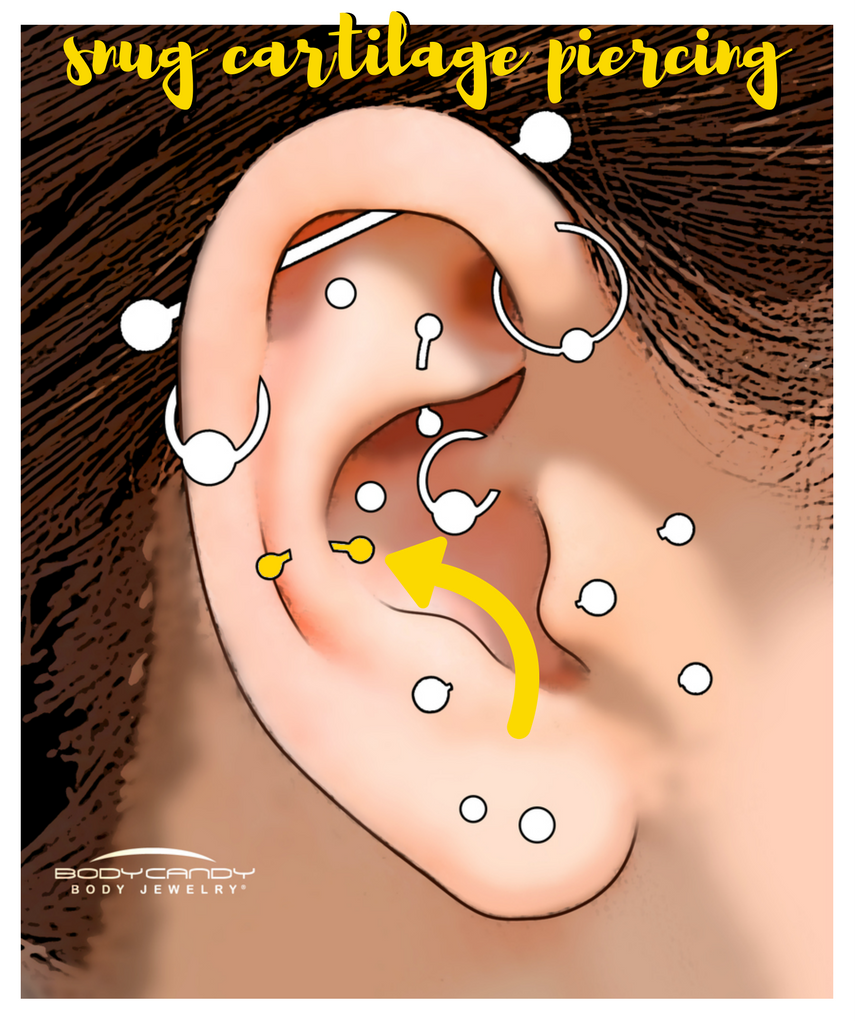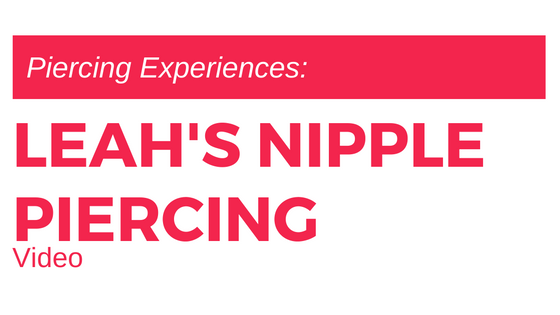
Location: through the vertical rim of the cartilage (not the outermost edge, but it does outline the ear); generally across from the tragus
Jewelry: initially, a curved or straight barbell will be used typically ranging in thickness of 18 gauge (1mm) to 14 gauge (1.6mm) with lengths of 5/16" (8mm) or 3/8" (10mm) most commonly used; jewelry types used can also include circular rings, captive rings (BCRs/CBRs), and horseshoe circular barbells
Healing: total healing time can be anywhere from 6 to 12 months; sometimes longer
Aftercare: about twice a day, wash with warm water and antibacterial soap; sea salt solutions and sprays can aid with the process and both are recommended for use in an aftercare routine; a soaked cotton ball can help in cleaning this sensitive area
Especially with this area of the ear, the structure and thickness of the cartilage can vary, so some anatomy may not allow for the possibility of a snug piercing at all. The best way to be sure of whether or not you and your ear can get this piercing is to visit your local piercing professional and see what their expertise has to say.
Another thing to consider with this cartilage piercing is that this inner ridge area where the snug is placed is one of the most sensitive parts of the ear. This piercing will hurt (but how much is, of course, dependent on your personal pain tolerance).
General Aftercare Tips for Ear Piercings:
- Avoid smoking, using public telephones, and sleeping directly on your new piercing.
- ALWAYS make sure you wash your hands before touching your piercing/its jewelry.
- Resist the urge to change your initial jewelry prematurely - it's worth the wait to do it correctly.
Additionally, piercings in the cartilage of the ear, which lacks an adequate blood supply, makes it more difficult to heal than locations that receive better circulation such as the lobe. The snug piercing is no exception to the long-term healing process that comes with most cartilage piercings. In fact, the snug is claimed by many to be one of the most difficult piercings to care for and heal properly due to its location on the ear. You'll definitely want to think carefully about which ear to pierce for the snug because sleeping on this guy is no fun.
DID YOU KNOW? The snug piercing was named by Caitlin Theobald after her clothing line, Snug Industries, in the mid-1990's.
For those who don't think the snug piercing is for them: try the faux snug piercing. It's two separate cartilage piercings that fake the look of a snug piercing without the difficult healing process. You get the look without the work...and who wouldn't be down for that?!
Want to check out some awesome options for spiffing up your snug piercing whether you just got it pierced or have had it for years?!



We've got you covered here at BodyCandy.com with a ton of snug piercing jewelry to choose from!
WELCOME TO THE BODY PIERCING ENCYCLOPEDIA
This post is included in the Ear Piercing category of our encyclopedia and is joined by many other blog posts about the other piercings available as options in the ear and surrounding areas.
- Standard Ear Lobe Piercing
- Upper Ear Lobe Piercing
- Standard Helix Cartilage Piercing
- Forward Helix Cartilage Piercing
- Rook Cartilage Piercing
- Conch (Inner) Cartilage Piercing
- Flat (Scapha/Outer Conch) Cartilage Piercing
- Daith Cartilage Piercing
- Snug (Anti-Helix) Cartilage Piercing
- Industrial Barbell Cartilage Piercing
- Tragus Cartilage Piercing
- Anti-Tragus Cartilage Piercing
- Surface Tragus Piercing
DISCLAIMER: the styles and locations displayed in the reference image featured in this post won't match perfectly with your ear's shape because each and every person has an anatomy that is uniquely individual and some of the piercings featured in our encyclopedia may not be possible for you to get. To find out what piercings are available for you and your specific anatomy, the best option is to visit your local professional piercer and ask for their expertise in determining what piercings are possible for you and your ear!







